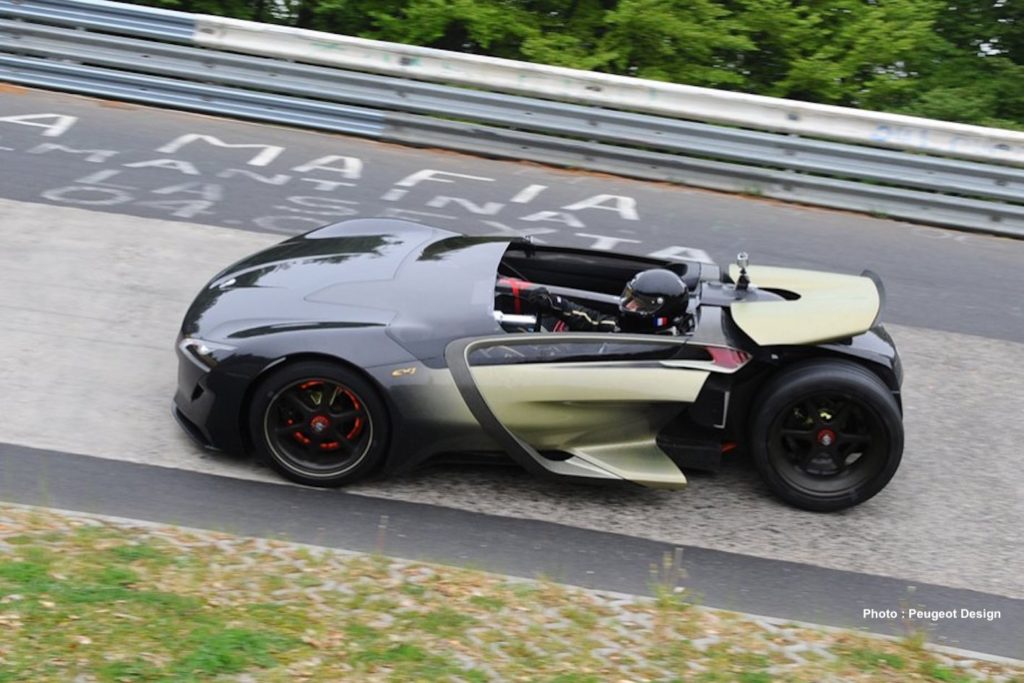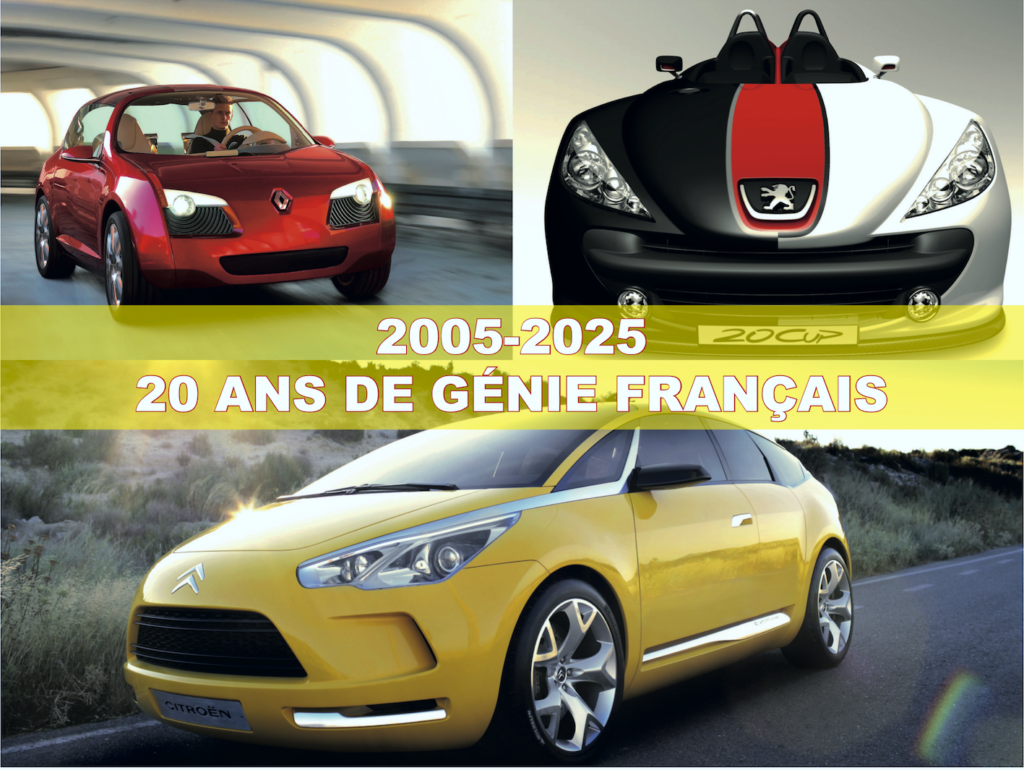
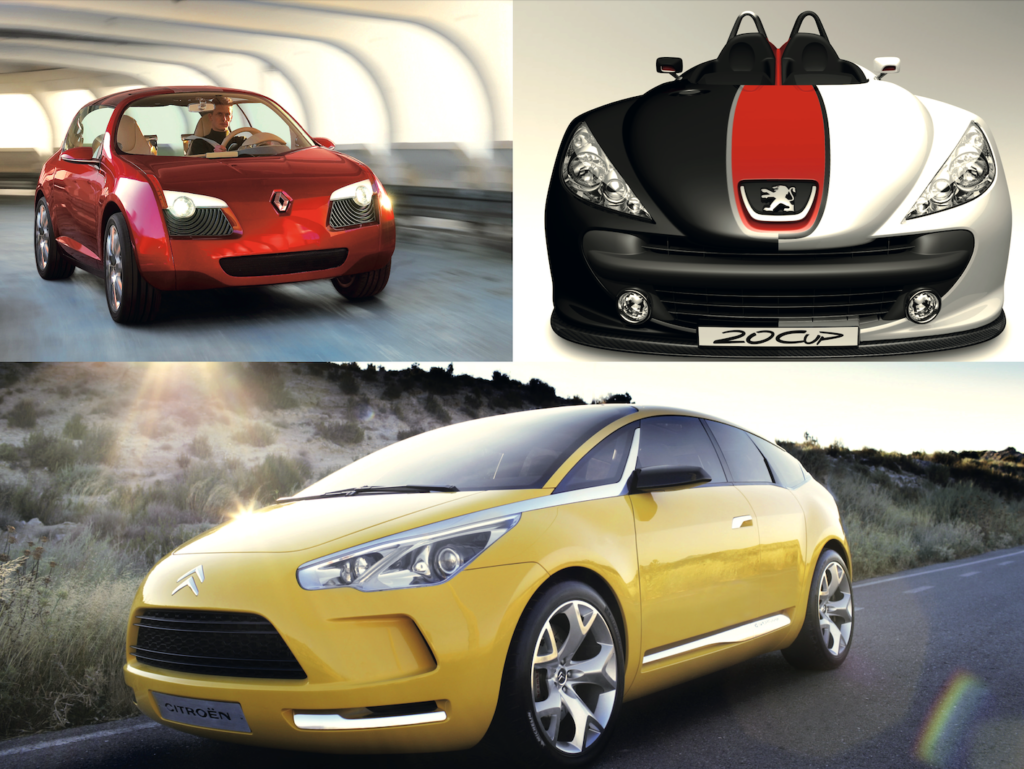
In the year 2025, let us celebrate an unusual anniversary: the 20th anniversary of three French concept cars unveiled in 2005: the Renault Zoé, the Peugeot 20-Cup and the Citroën C-Sportlounge. Three different worlds that revealed the many facets of French genius. Because yes, blue-white-red automobile design is often – and above all – a story of strong concepts, such as here a mischievous city car, a three-wheeled sports car and a luxurious and dynamic crossover that handles the saber!
RENAULT ZOÉ
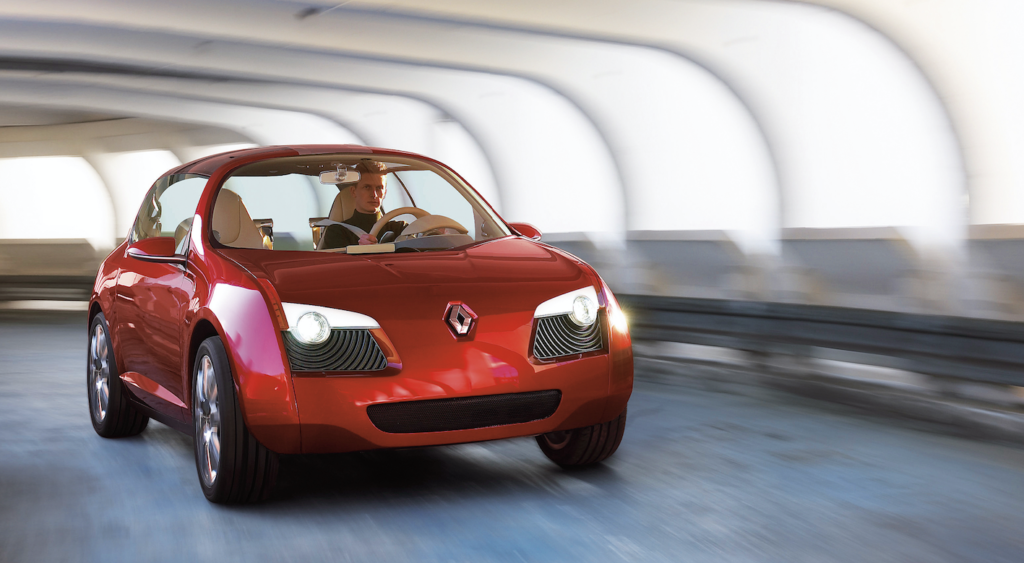
In 2005, Renault demonstrated its design expertise in a sector in which it excels: the small city car. Two years before the launch of the second generation of the rather bland Twingo, designed by Carlos Ghosn, the Zoé was a fun and friendly car. That year, the electric car was not yet a thing, and the Renault Zoé unveiled that year hid a 100 hp 1.6-liter, 16-valve turbocharged combustion engine under its tiny front hood. It is a feat to have been able to fit it in this small vehicle measuring 3.45 m in length (the 2007 Twingo II measures 3.68 m).

The architecture of this vermilion Zoé is radical. It is reminiscent of the Argos, with its asymmetry and three seats. The rear seat is nestled in a relatively comfortable space, next to a space dedicated to the trunk. The boot can be accessed by opening the small left side window or more simply by opening the tailgate, which has an interesting kinematic system, since the lower part comes to cover the window, limiting its bulk when open. This little Zoe is full of tricks to make life easier in urban areas. The passenger-side door, thanks to its pantograph hinges, provides unrestricted access to the rear seat.
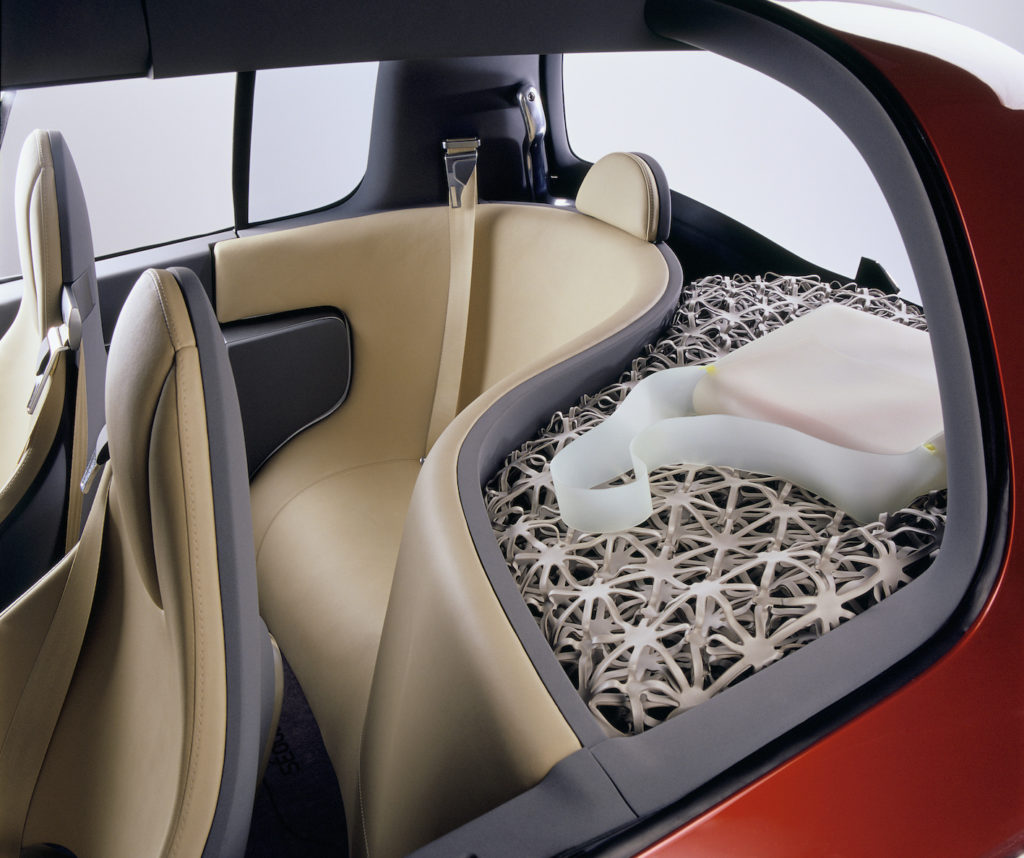
Designed for the city, the Zoe also has a sleek interior, like those of the concept cars that preceded it. The interior design is by Stéphane Janin, who three years later took over the concept car studio from Michel Jardin in 2008. Today, Stéphane is in charge of the advanced design unit of the GAC group in Milan. His signature can be recognized in the meticulous work to make every space functional: the seat cushions have small drawers with side openings, the dashboard is almost similar to an airplane wing and is hollowed out like a simple sheet rolled up on the front cross member. It conceals an enormous storage space.
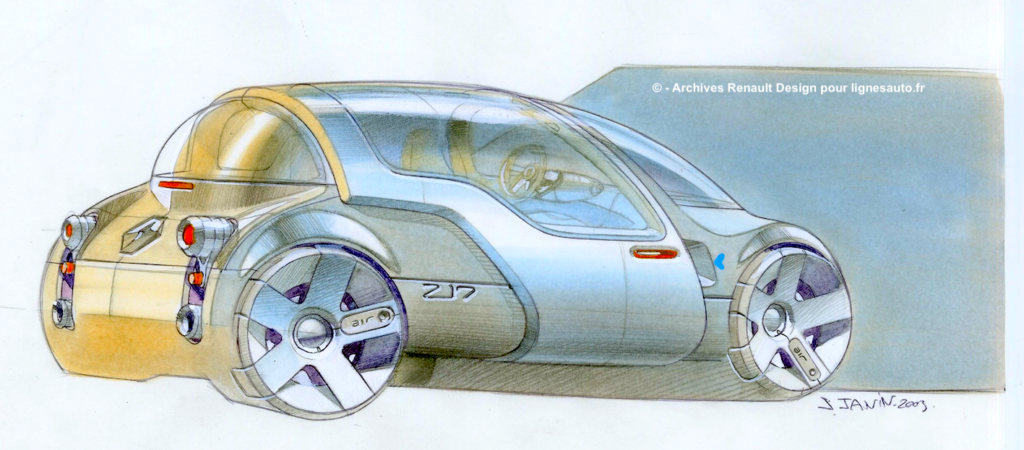
This atmosphere of serenity and lightness is completed by extremely sleek seats, while the controls make use of the Touch Design theme developed under the direction of Patrick le Quément. The exterior styling is by Antony Villain, currently head of design at Alpine. The windshield has a panoramic shape that maximizes visibility, which is itself enhanced by the presence of two half-canopies made of glass inlaid with LEDs.
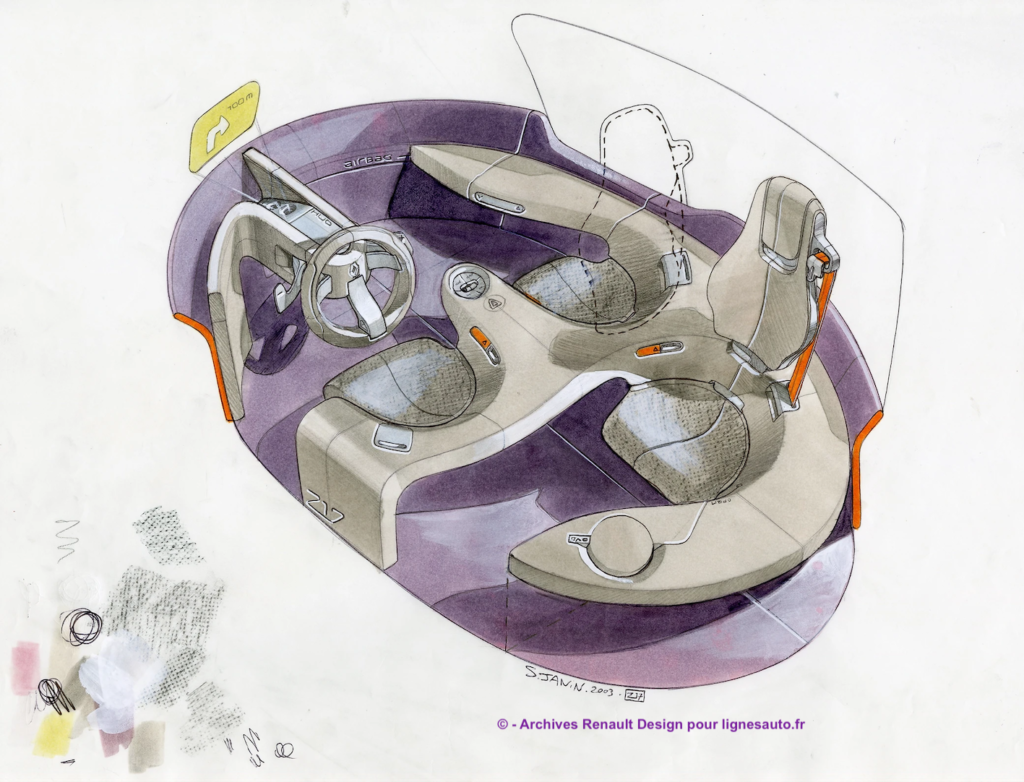
Michel Jardin, then in charge of concept cars, told me that this technical innovation was unearthed during a visit to the Milan Furniture Fair. “It was when we saw a table with these LEDs that it clicked for us! A specialist Swiss glassmaker designed these two half-canopies.”
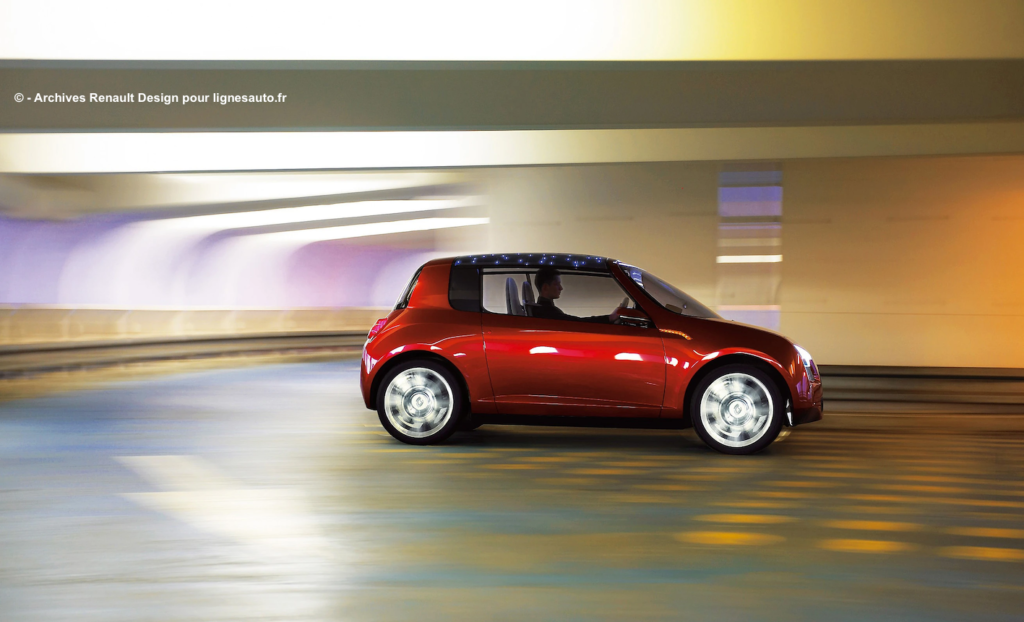
The identity of Zoé adopts the logo embedded in the sheet metal, while the two half-calenders housed under the headlights feature concentric circles in relief that hypnotize the eye. On board, the colors and materials of this clever little car are by Paul Stamper, who thus moves from the prestigious Fluence coupe to the mini-city car with the same talent and the same ambiances. The 2007 Twingo II will unfortunately not be taking any of this concept car’s features.
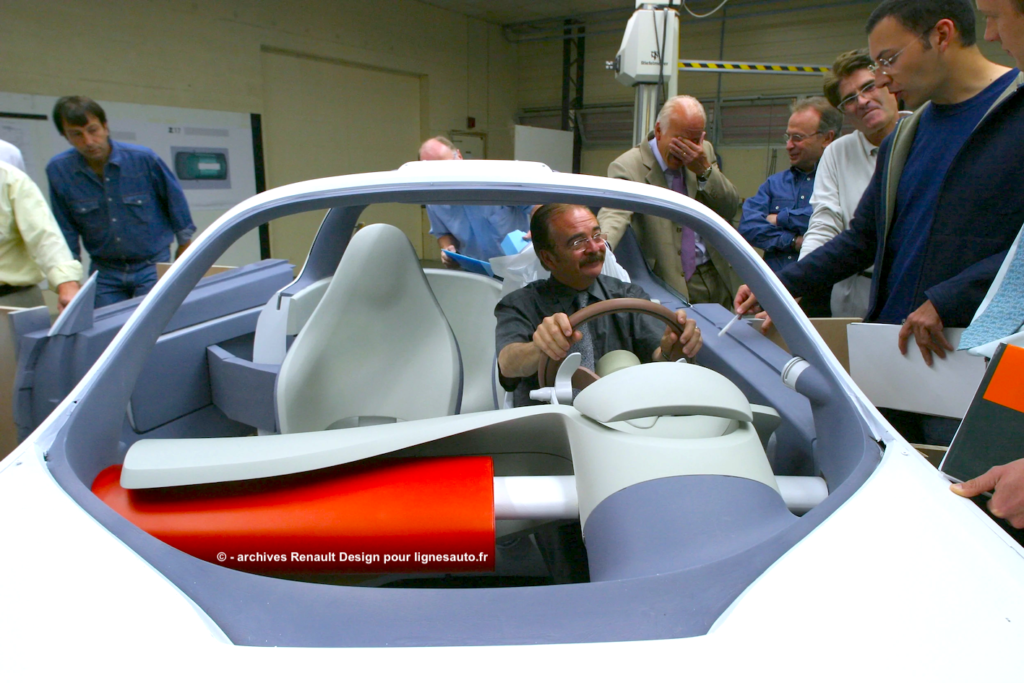
CITROËN C-SPORTLOUNGE
This UFO with a jet nozzle mouth has elicited some great reactions. It reveals both an outstanding designer (Frédéric Soubirou) and the beginnings of a “Citroën-DS” line and confirms the maturity of the work carried out by Jean-Pierre Ploué’s team. In 2005, at the Citroën stand at the Frankfurt Motor Show, this spectacular bright yellow vehicle brightened up the greyness of that September. “I had imagined it in grey, a very beautiful grey,” its designer Frédéric Soubirou told us at the time. Lost: the vehicle sparkles, and not just because of its color. Its name: C-Sportlounge.
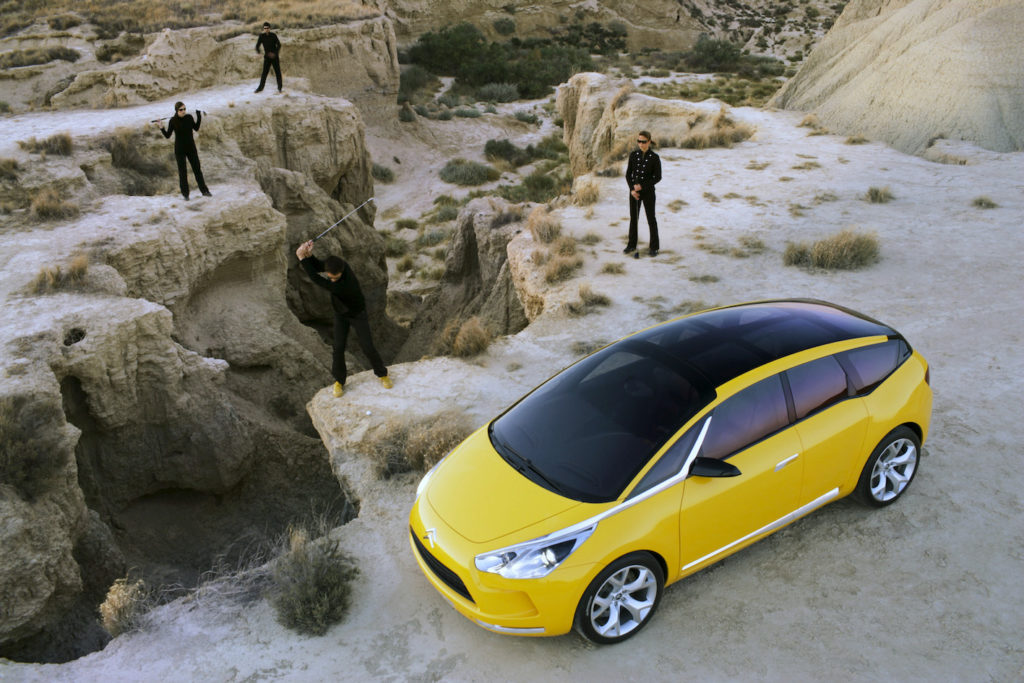
The brief for this concept car, which will remain a milestone in the history of Citroën style in the 2000s and 2010s, was both simple and complex. Simple, because Jean-Pierre Ploué, who had been Citroën’s design director for five years, asked his designers to create “a new generation of vehicle between the sedan and the minivan”, Frédéric recalls. Complicated, “because Jean-Pierre didn’t want a minivan connotation, but a sporty, high-status vehicle”, he adds. As with all concept car projects, there was internal competition between the brand’s designers.
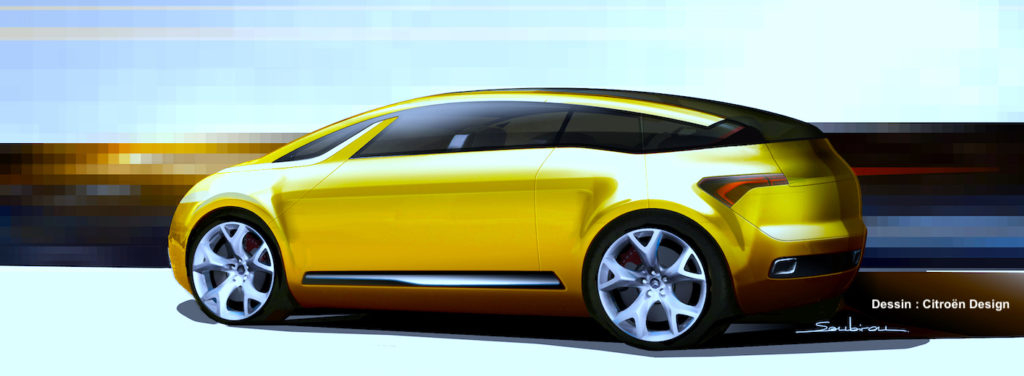
Frédéric Soubirou’s design was therefore chosen. The designer, who is now responsible for the exterior design of the DS Automobiles brand, experienced the transition between Arthur Blakeslee (former head of Citroën design until the arrival of Jean-Pierre Ploué at the end of 1999) and Jean-Pierre Ploué. “I got my degree at Citroën and I knew the Blakeslee era a little. When I heard that Jean-Pierre Ploué was coming, I remembered Renault’s Argos. As a student, knowing that Ploué was taking the reins motivated us because we felt that something was going to happen!”

A bit of a shake-up, in a way! “When he arrived, Jean-Pierre Ploué put his team together, but I had just finished my internship without a direct follow-up. Fortunately, a few weeks later, he contacted me again through Marc Pinson and took me on a trial basis. The first job I did was the C4 headquarters! But I also worked on a few interior and exterior projects and Jean-Pierre liked all of that, especially a sketch on the first generation of Picassos. So he made me part of the team!”

The good life, then? Not quite. “It wasn’t easy every day because Jean-Pierre still wanted very experienced people, and I was just starting out, so I had a hard time! I worked on the C4 coupe in competition with Alexandre Malval (now head of Mercedes’ Sophia Antipolis advanced design center), who won the project by the way.” And then Frédéric Soubirou made the break of the century when his project was selected for the C-Cportlounge concept car. A project that started with Frédéric’s characteristic little sketches, in Bic pen, that could fit on a Post-it note! “I still sometimes make these little drawings,” he tells us.
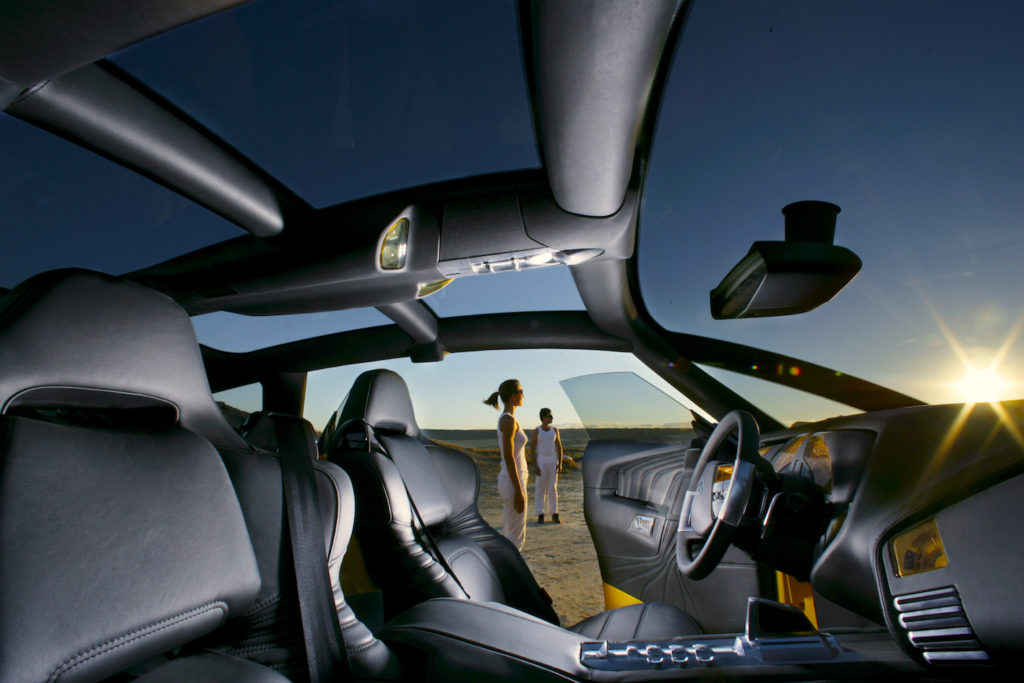
“Nowadays, at DS, I do less design, I have other responsibilities. But even today, to understand certain things, I have to go through that process.” The brief from C-Sportlounge was therefore to reinvent the hatchback by giving it the attributes of a sports car and the status of a top-of-the-range car. “I proposed this monolithic shape, which Jean-Pierre liked right away. Nevertheless, he wanted something even more prestigious, otherwise we would have fallen back into the world of the minivan. And that’s how the famous saber was born.”
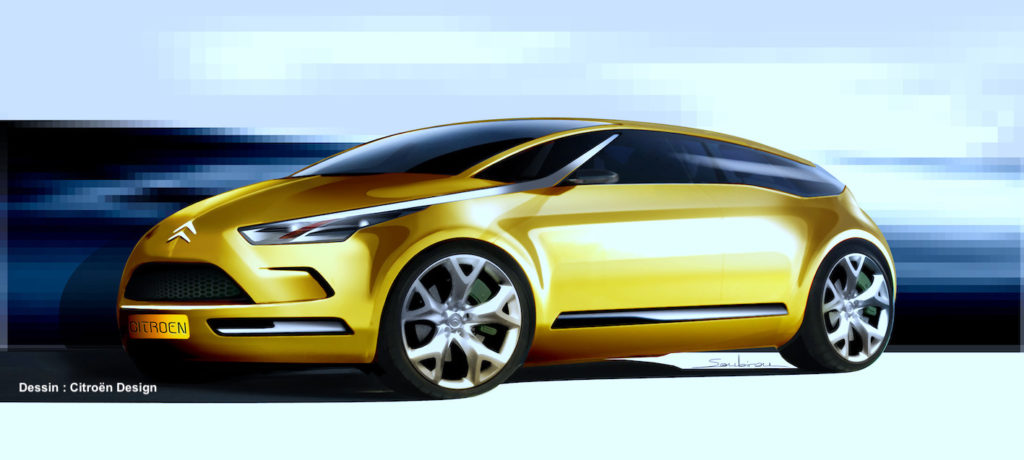
The sword is the aluminum strip that starts on the front wing and attempts to rise up to the windshield pillar (below, in 1). This attempt stops at the third to give dynamism and, above all, to separate the roof from the glass, giving it that floating appearance characteristic of DS cars! “Thanks to this sword, we have a clear view of a strong front hood despite a very forward windshield. At the front, we also wanted to assert the character of the car by abandoning the rather thin radiator grilles of previous concepts. The one on the C-Sportlounge is a kind of nozzle and is framed by scoops on the side. This creates a monolithic volume that is coupled with a highly unconventional rear end, in the style of a shooting brake. But there is more to this car than that. We also invented the floating chrome sills that we now see on all our competitors’ cars.” (in 2, below)
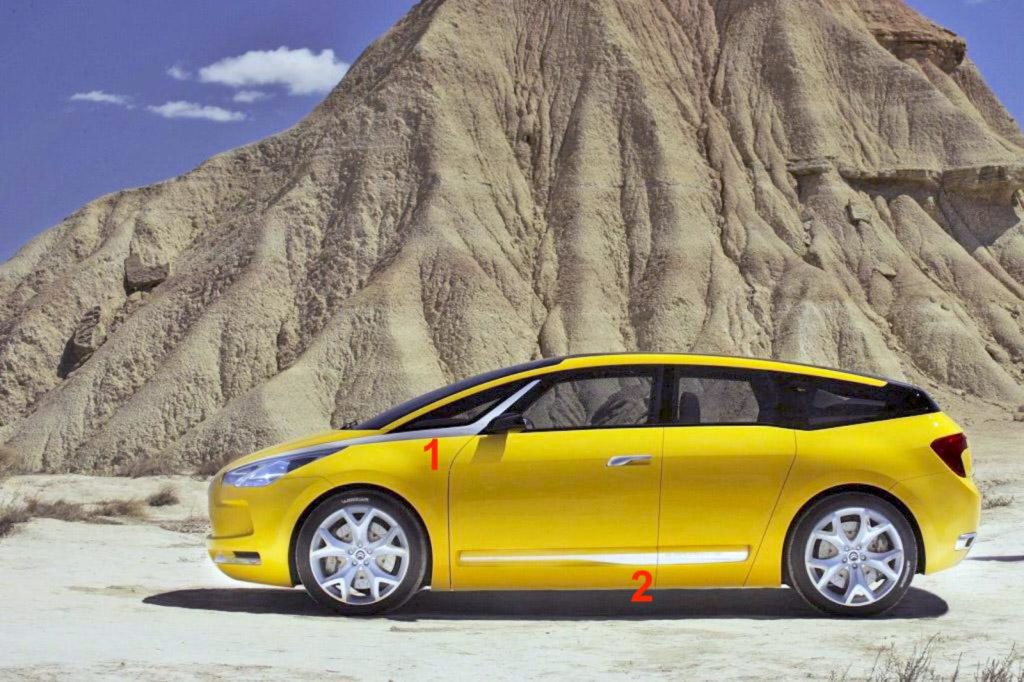
It is important to put the C-Sportlounge concept car in context, because at the time, there was no talk of a Citroën DS line in the PSA group. The C-Sportlounge marks a high point in the history of the brand’s design because it led to the birth of the DS5 in 2011, a car born in pain because it was entering a new segment. A pain that Frédéric Soubirou would (somewhat) experience during the genesis of “his” first concept car.
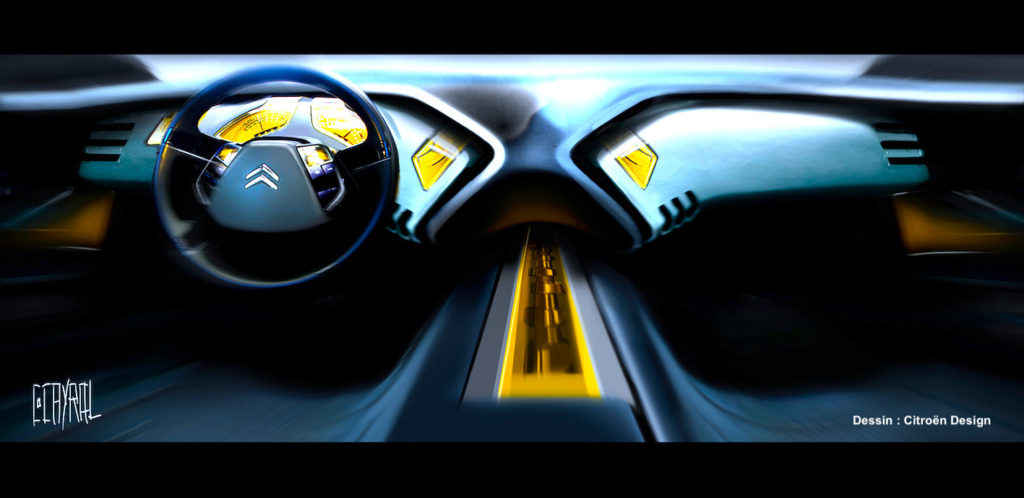
“I have a thousand anecdotes about this car because it’s my first. The one that started a great series for me with the DS3, the DS Revolt and the Survolt. But internally, it wasn’t easy in 2004-2005 to impose your ideas when you’re young and have little experience. Things were tense with the then project manager, Mark Lloyd, and I was also discovering the reality of producing a concept car with an extremely tight schedule!”
PEUGEOT 20-CUP

Sandwiched between the two monsters that are the 907 coupe with V12 engine (above right) from the talented team led by Gérard Welter (1942-2018) and the 908 RC four-seater sedan with rear mid-engine (above left), the microscopic 20-Cup revives the theme of the three-wheeled sports car. It heralds the 207, just as the 20-Cœur had preceded the 206 in 1998. The design of the 207, unveiled in January 2006, was thus deflowered at the Frankfurt Motor Show in September 2005 by the two examples of the 20-Cup concept.
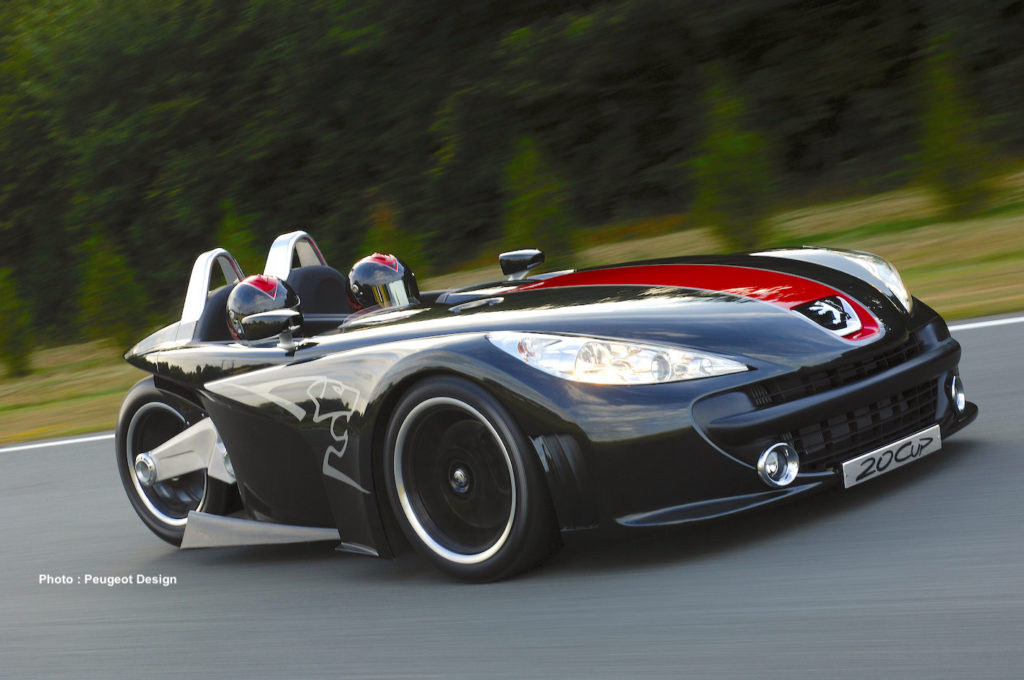
This is a three-wheeled vehicle that inevitably evokes the 1996 Asphalte. It too attempts to clone the world of the car (with the front end of the future 207) and that of the motorbike with its single rear wheel articulated on a single-arm axle. Gérard Welter’s dream of creating a real three-wheeler has been fulfilled, because the two Asphalte had twin wheels at the rear. Not the 20-Cup.
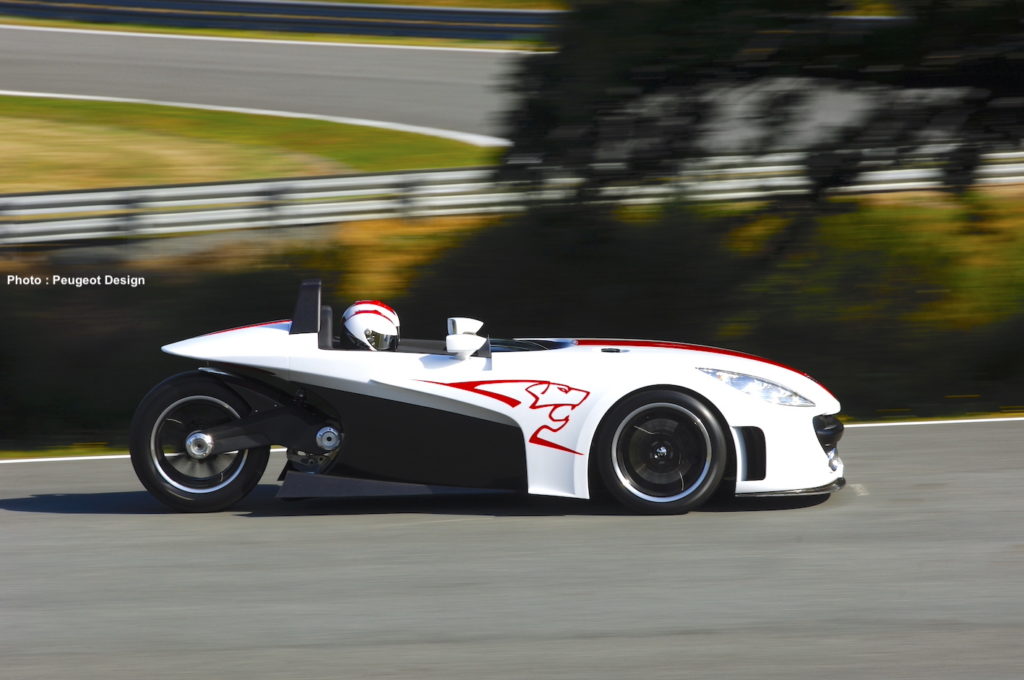
Of course, as a Peugeot, it offers dynamism and first-rate driving sensations. Sitting low to the ground, strapped into a confined cabin for two, the driver knows that he has a machine with its center of gravity shifted forward. This is where the new engine, the result of collaboration with BMW, is located. This 1600 cm3 direct injection engine, boosted by a turbocharger, develops 170 hp. With its featherweight of 500 kg, the same as a Citroën 2CV (!), the 20 Cup increases the driving sensations tenfold. It is a front wheel drive and its single arm at the rear only acts as a guide. On board, the originality comes from the steering wheel, which has a central screen whose reading is facilitated by the inclination of its display according to the angle given to the steering.
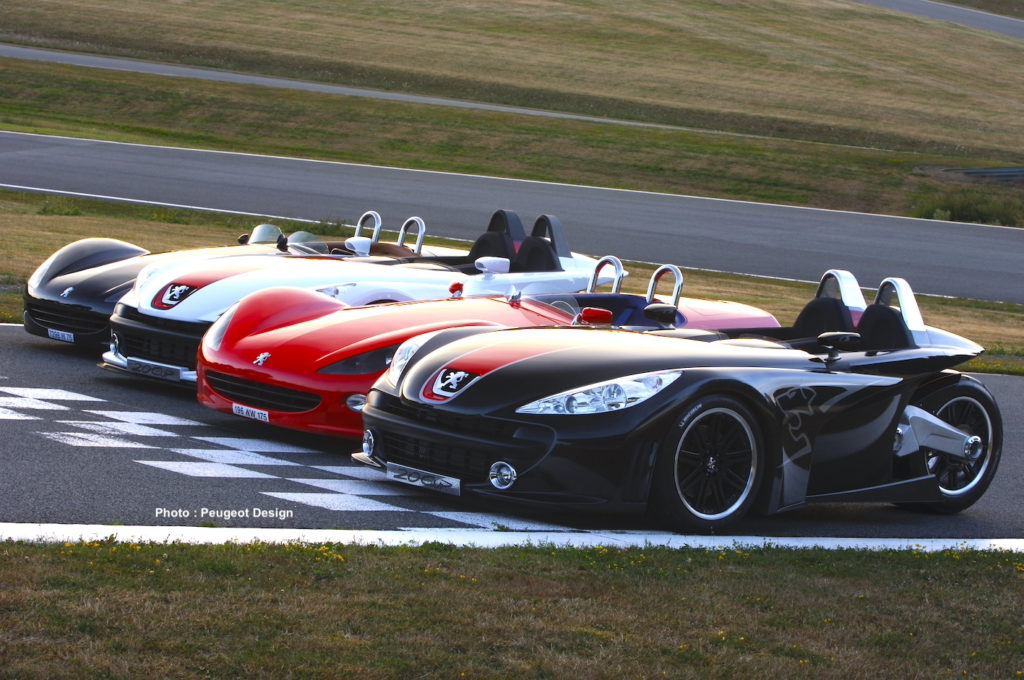
The idea of the three-wheeled car was perpetuated five years later with the 2010 EX-1 electric concept below. As for the 20-Cup, it gave rise in 2006 to the “Spider 207” competition series, a four-wheeled 20-Cup with a central engine.
